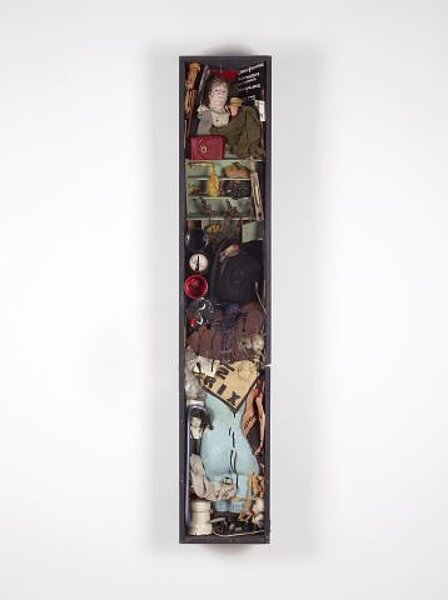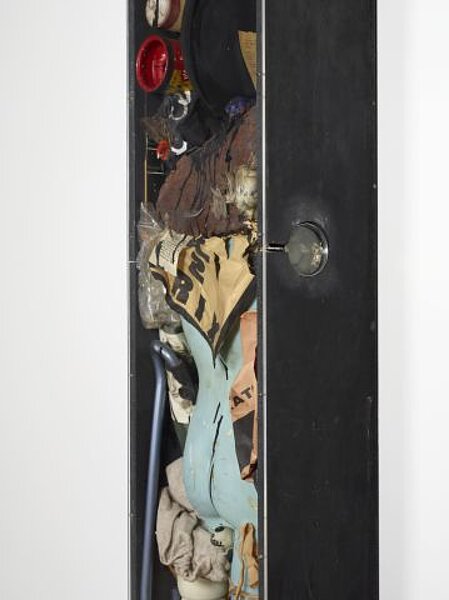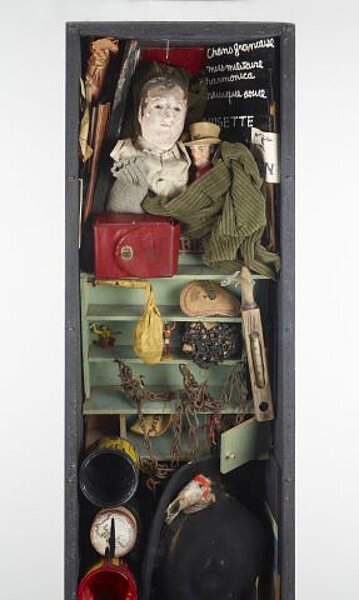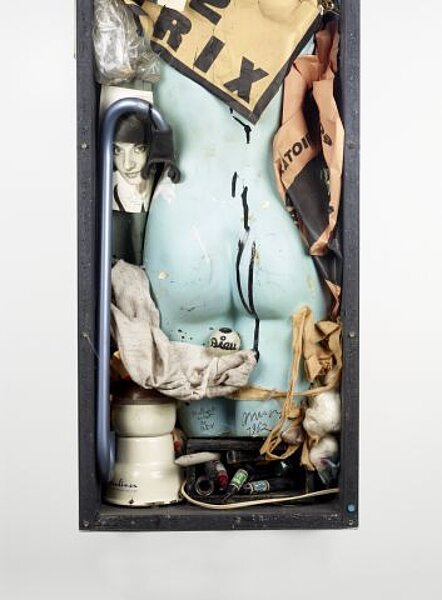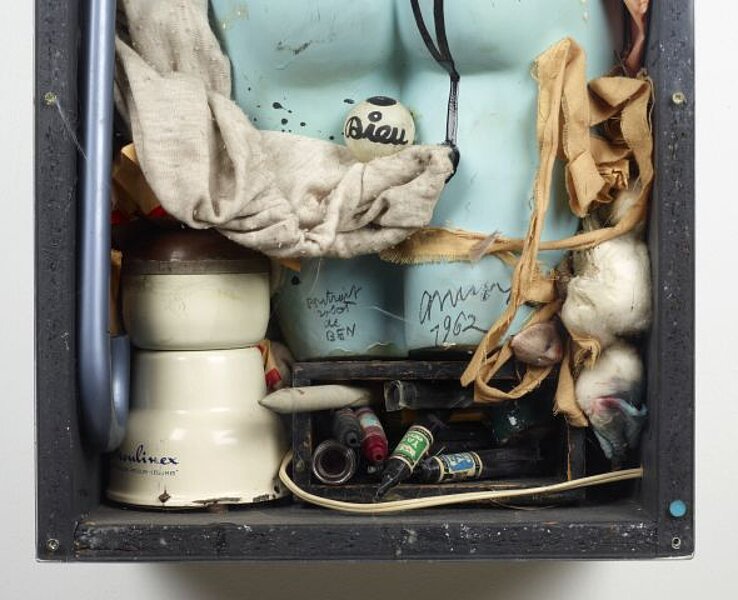
Arman
Portrait robot de Ben
1962
| Object description | Wooden box with various objects belonging to Ben Vautier |
|---|---|
| Object category | sculpture |
| Dimensions |
Objektmaß:
height: 182 cm,
width: 34,5 cm,
depth: 22,5 cm
|
| Year of acquisition | 1978 |
| Inventory number | B 335/0 |
| Creditline | mumok - Museum moderner Kunst Stiftung Ludwig Wien, ehemals Sammlung Hahn, Köln |
| Rights reference | Bildrecht, Wien |
| Further information about the person | Arman [GND] |
| Literature |
museum moderner kunst.SAMMLUNG HAHN Museum der Wünsche Porträts. Aus der Sammlung Nouveau Réalisme. Schwerpunkte der Sammlung I Love Pop. Europa-Usa anni '60. Mitologie del quotidiano Die Welt der Dinge. Stillleben - Objekte - Installationen |
In fall 1960, French artist Arman filled the Paris gallery Iris Clert with trash and scrap metal. This exhibition, entitled "Le Plein" (Plenty) turned Arman into a star overnight. It was a response to Yves Klein’s exhibition "Le Vide" (The Void), which had taken place two years earlier in the same gallery, and which presented nothing more than an empty gallery painted white and lit by one blue lamp. It was with piles of objects, which Arman called accumulations, that the artist secured his place in art history. Some of these can be seen as a critique of consumerism in the new throw-away society of the 1960s, while others present the diversity and specificity of seemingly identical objects, or they refer to a specific person, as in the work shown here. “Portrait-robot” means a phantom image. Viewers are invited to search for a “picture” of a certain person hidden in the objects collected here in a box. Arman is working with the idea that it is not the appearance of someone that characterizes them, but the things that that person uses and collects. We can see paint tins, dolls, a hat, a number of pens, boards and pieces of paper with writing, a stuffed bird, and a female torso. All of these objects belonged to the person searched for—named Ben. This is Ben Vautier, born in 1925 in France, a friend of Arman and also an artist. In the years when this “phantom image“ was made, he had a small shop in Nice, called Magasin, in which he made the act of selling and trading art into the subject of his art, and in which he sold all kinds of bric-a-brac. Vautier gained international renown with his small black pictures on which he noted down his ideas on art and the art scene, in free-flowing handwriting using a paintbrush and white paint. There is a small picture by Vautier in the top right of this box.
© mumok – museum moderner kunst stiftung ludwig wien
